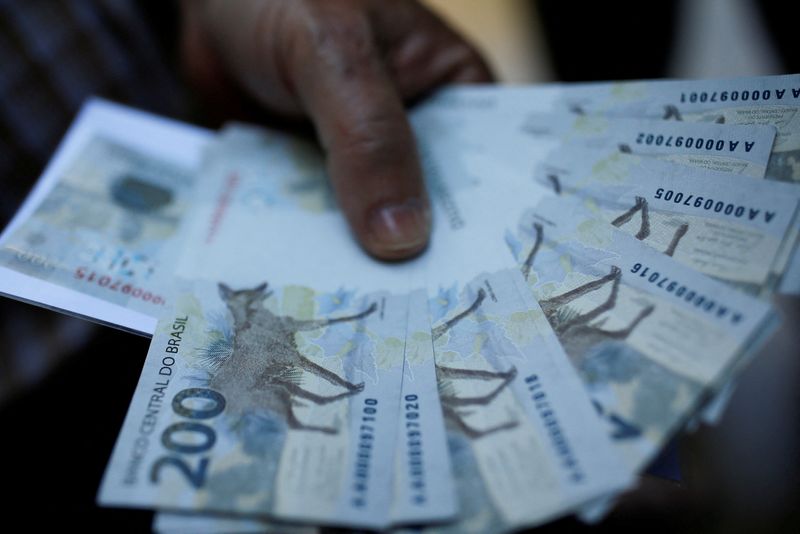
©Reuters. FILE PHOTO: 200 reais banknotes are seen after Brazil’s Central Bank issued the new banknote in Brasilia, Brazil, September 2, 2020. REUTERS/Adriano Machado/File Photo
SAO PAULO (Reuters) – Brazil’s central bank’s monetary policy director said on Tuesday that any change in monetary easing guidelines would not necessarily be related to what the interest rate will be at the end of the bank’s easing cycle.
At an event hosted by the APCE consultancy, monetary policy director Gabriel Galipolo said that given the way the disinflation process has unfolded and the pace of rate cuts, any change in guidance does not mean a correlation with a terminal rate.
“The absence of a signal from Copom on the terminal interest rate comes from the fact that we adopted the 50 basis point pace precisely to take advantage of it, buy time and see how things will develop,” he explained.
The central bank kicked off its easing cycle in August with a 50 basis point cut after nearly a year of rates unchanged at a six-year high of 13.75%, aimed at fighting inflation.
Since then, he has consistently signaled maintaining the same loose pace for future meetings.
Galipolo stressed that despite the narrowing of the differential between the country’s interest rates and those of advanced countries, which have delayed the start of their interest rate easing cycles, Brazil’s exchange rate has performed well.
“Even with this differential closure, the exchange rate remained at a good level,” he said.
Asked whether the central bank had an exchange rate target, Galípolo denied the existence of a target, arguing that a floating exchange rate is an important “line of defense.”
Last week, the central bank head said that “at some point” policymakers will have to remove the use of the plural in their monetary easing guidelines, which signaled cuts of 50 basis points for the next “meetings” .
Brazil’s benchmark interest rate is now 11.25%.